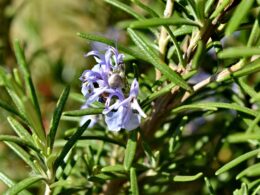What Is a Cattleya Flower? Species and Origin
Cattleya flowers are a genus of orchids, naturally growing in Costa Rica and south to Argentina. These plants are a popular choice for gardens and landscaping due to their large, showy blooms.
For a long time, the cattleya was considered to be the ‘queen of orchids,’ and some people still think the word is synonymous to orchid. Some species belonging to the genus Cattleya include:
- Cattleya dowiana – growing in Costa Rica;
- Cattleya labiata – found in Brazil;
- Cattleya trianae – native to Colombia and known as the Christmas orchid.
The genus was named after William Cattley, a horticulturalist who obtained the first specimen of Cattleya labiata after its discovery. He got it to bloom, and it became the basis of the species description written by John Lindley.
Characteristics of a Cattleya Orchid
Cattleya flowers are large and showy, with colors ranging from white to purple. The blooms can be either fragrant or odorless. Each flower has three petals and three sepals, the central one being larger than the rest. The blooms grow on a spike that can reach up to two feet in length.
Cattleya plants can be either terrestrial or epiphytic, meaning they grow on other plants or trees. In the wild, they can be found growing on branches or trunks of trees. Their leaves are leathery and oblong or elliptical.
What Does the Cattleya Flower Symbolize?
The cattleya flower is a symbol of fertility, beauty and love. It’s often given as a gift to newlyweds or couples who are about to have a baby. The cattleya is also the national flower of Costa Rica.
What Are the Best Varieties of Cattleyas?
If you’re looking for cattleyas to grow in your garden, there are plenty of hybrids to choose from. To help you decide, we found a couple of great examples in every color. Look them up and see if there’s something you like!
- White: Bob Betts ‘White Lightning,’ ‘White Reception,’ and ‘White Diamond;’
- Variegated: ‘Purple Cascade,’ ‘Moscombe,’ and ‘Burana;’
- Pink: ‘Pink Empress,’ ‘Pink Diamond,’ and ‘Pink Spice;’
- Red: ‘Red Dragon,’ ‘Red Doll,’ and ‘Red Jewel;’
- Orange: ‘Orange Nugget,’ ‘Orange Diamond,’ and ‘Orange Bowl;’
- Purple: ‘Blue Heaven,’ ‘Blue Boy,’ and ‘Blue Grotto.’
As you can see, cattleyas come in all colors except for true blue. The blooms can be either solid or have stripes or spots. Some are so beautiful it’s hard to believe they’re natural!
When Do Cattleya Orchids Bloom?
The blooming season typically starts in the spring, before Mother’s Day, but some varieties will bloom through the fall. The Cattleya percivaliana, for example, blooms in the fall and winter. Most cattleyas need to be at least four years old to start flowering.
To encourage blooming, cattleyas need to have a period of dormancy during which they don’t receive any water. This usually happens in the winter. The amount of time they need to rest varies from species to species, so make sure to do your research before you start the process.
Where Are Cattleyas Hardy in the United States?
Cattleyas are tropical plants, so they’re not winter-hardy in most of the United States. If you live in USDA hardiness zones 9 through 11, you can grow cattleyas outdoors all year round. In colder climates, cattleyas can be grown as houseplants or in greenhouses.
How to Grow Cattleya Flowers?
These orchids aren’t difficult to grow, but they do need some specific conditions. They thrive in potting mixes made specifically for orchids. There are also orchid fertilizers available to help them flower. Outdoors, they can be mounted to a tree.
Cattleya flowers like bright, indirect light and should be watered when the soil is dry to the touch. Cattleyas also need high humidity (40% to 70%), so if you live in a dry climate, you might want to consider getting a humidifier. Alternatively, you could place the pot on a tray filled with water and pebbles.
As for their ideal temperature, 70-85 degrees Fahrenheit is preferred during the day. At night, 55-60 degrees is ideal. These flowers don’t like drafts, but they need good air circulation to prevent fungal diseases.
If you follow these tips, you should have no problem growing cattleya flowers in your home. They make for a beautiful and exotic addition to any space.
Repotting, Dividing and Transplanting Cattleyas
Cattleyas should only be repotted when they look as if they were going to fall over. They prefer to be pot-bound rather than overpotted. They can be divided and transplanted in the spring.
To divide cattleyas, simply remove the plant from its pot and gently cut its rhizome apart into two or more sections, making sure each section has 3-4 pseudobulbs. Transplant the divisions into pots filled with fresh potting mix, and water them well.
Cattleyas can be transplanted outdoors in the spring or fall. Choose a spot that gets partial sun and has well-drained soil. If you live in an area with heavy rainfall, make sure to choose a spot on higher ground to prevent the cattleyas from getting too much water.
How Are Cattleya Orchids Used in Decor?
Cattleya orchids are often used in wedding bouquets and corsages. They’re also a popular choice for centerpieces and other floral arrangements. If you’re looking for something a little different, you could try using them to make a cattleya lei. Whatever you decide to do with them, cattleya orchids are sure to make a statement.
Are Cattleya Flowers Toxic to Pets?
The cattleya plant isn’t toxic to pets, but the flowers may cause stomach upset if ingested. If you have pets, it’s best to keep them away from cattleyas (and all other flowers) just to be safe.
Enjoy the Show of Cattleyas in Your Home or Garden
Cattleyas make for beautiful, exotic additions to any home décor arrangement thanks to their large and showy flowers. They can also be grown outdoors in USDA hardiness zones 9 through 11. Just make sure to give them the proper care, and you’ll be rewarded with a beautiful display of flowers!



















